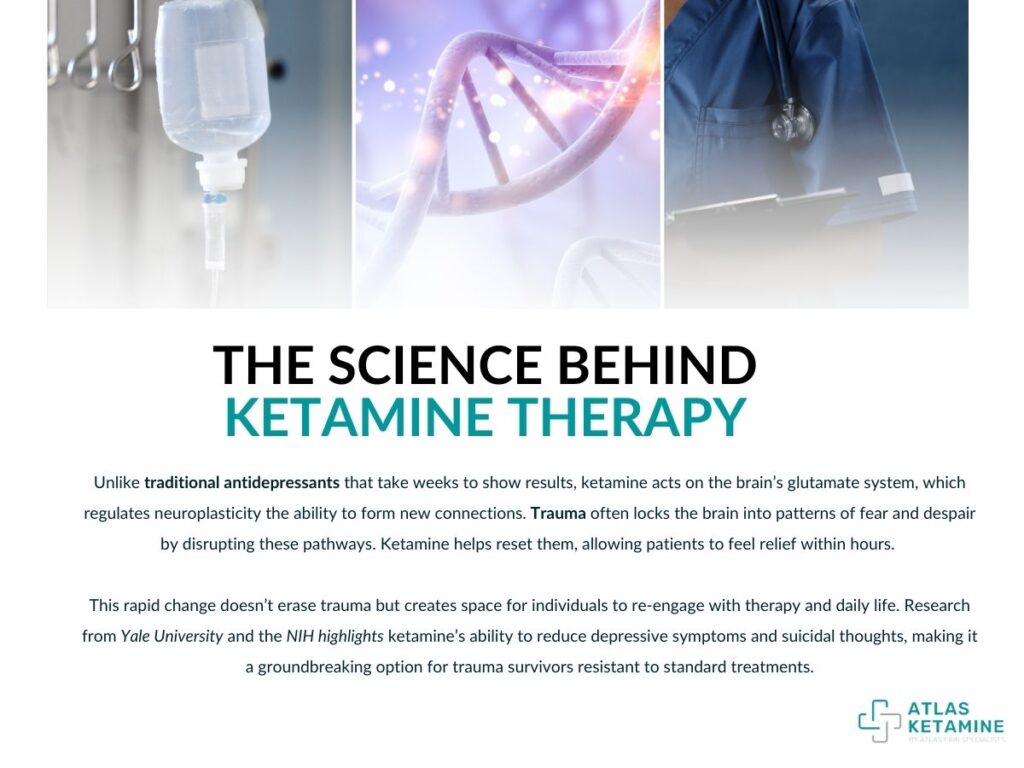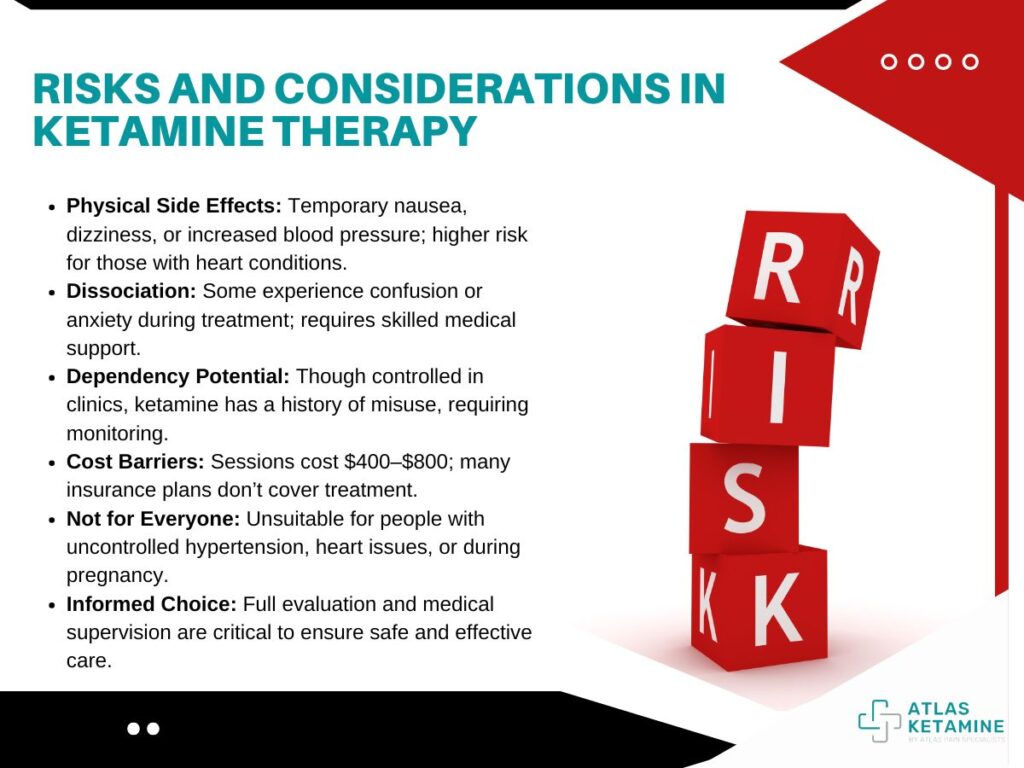Trauma recovery is rarely straightforward. For many people, the road back to stability involves therapy, medications, and lifestyle changes that take time to work. Yet, countless trauma survivors feel trapped in cycles of depression, anxiety, and flashbacks despite doing “all the right things.” This is where ketamine therapy has entered the picture as an unexpected game-changer.
Originally developed as an anesthetic in the 1960s, ketamine is now being used in clinical settings to treat conditions linked to trauma, particularly post-traumatic stress disorder (PTSD) and treatment-resistant depression. Ketamine therapy is changing trauma recovery by offering fast symptom relief, strengthening the brain’s healing capacity, and creating new hope for those who had exhausted other options. Let's have a look at how ketamine therapy is changing trauma recovery.
Understanding Trauma and Its Lasting Impact
Healing from trauma is more than “getting over it.” When someone experiences events such as abuse, combat, accidents, or disasters, the brain and body can remain locked in a state of survival. This often shows up as flashbacks, nightmares, anxiety, depression, or a sense of detachment from life. Traditional treatments like antidepressants and talk therapy are effective for many, but not all. Antidepressants can take four to six weeks to show improvement, and therapy often requires time, consistency, and emotional energy that many traumatized individuals struggle to sustain.
The difficulty of trauma recovery lies in how deeply trauma reshapes the brain and nervous system. Trauma can weaken neural pathways that regulate emotions and reinforce patterns of fear and hypervigilance. For people living with PTSD or severe trauma symptoms, this makes progress feel painfully slow. That’s why ketamine therapy’s ability to “rewire” the brain and provide rapid relief has become so significant.
Trauma also influences daily functioning in ways that are often invisible to others. Survivors may struggle with concentration, memory, or emotional regulation, which can affect work, relationships, and self-esteem. These challenges make recovery feel like an uphill battle, even with supportive care. Addressing trauma effectively requires interventions that not only reduce symptoms but also strengthen the brain’s capacity to heal and rebuild resilience, which is where ketamine shows unique promise.
The Science Behind Ketamine Therapy
Ketamine works differently from traditional antidepressants. Instead of targeting serotonin or dopamine directly, ketamine influences glutamate, the brain’s most abundant neurotransmitter. Glutamate plays a key role in neuroplasticity, which is the brain’s ability to form new connections. When trauma disrupts these connections, people feel stuck in loops of fear and despair.
By increasing neuroplasticity, ketamine essentially gives the brain a chance to reset. In practical terms, this means that someone overwhelmed by trauma may suddenly feel a lifting of emotional heaviness within hours of a ketamine session. This doesn’t erase trauma, but it helps create the mental space to engage with therapy, relationships, and coping strategies more effectively.
Studies at institutions such as Yale University and the National Institutes of Health have shown that ketamine infusions can reduce depressive symptoms and suicidal thoughts rapidly, often within 24 hours. For trauma survivors who have tried multiple medications without relief, this speed can feel life-saving.

Ketamine and Trauma Recovery in Practice
In clinics across the United States, ketamine therapy is being offered in two main forms: intravenous infusions and intranasal sprays. Sessions usually take place in a calm, controlled environment with medical supervision. The effects are often described as dissociative, meaning patients may feel detached from their bodies or experience dream-like states.
This altered state can create a unique therapeutic window. During or shortly after treatment, many patients report seeing their trauma from a new perspective, without the overwhelming emotional charge. For instance, a combat veteran with years of PTSD may suddenly be able to recall memories without spiraling into panic. Or a survivor of childhood abuse may find the ability to talk about their past more openly with a therapist after ketamine treatment.
Ketamine is not a standalone cure. Instead, it works best when integrated with psychotherapy, such as cognitive behavioral therapy (CBT) or eye movement desensitization and reprocessing (EMDR). The combination of rapid symptom relief and renewed neuroplasticity allows therapy to reach deeper, fostering long-term healing.
Benefits of Ketamine Therapy in Trauma Recovery
The benefits of ketamine therapy go beyond simple symptom relief. For trauma survivors who have felt stuck, these advantages often represent the difference between continued suffering and the possibility of meaningful progress.
The greatest benefit of ketamine therapy is its ability to provide rapid relief from intense trauma symptoms. Unlike traditional antidepressants that take weeks, ketamine often works within hours, which can be critical for someone in crisis.
Rapid Relief from Symptoms
One of the most celebrated benefits is ketamine’s speed. Suicidal thoughts, paralyzing depression, and panic can be reduced almost immediately after treatment. For patients who have spent years cycling through medications, the quick turnaround can feel like a lifeline.
Breaking Avoidance Cycles
Trauma survivors often avoid therapy because it feels too overwhelming or painful. After ketamine sessions, many patients feel calmer and more willing to engage. This openness allows them to participate more fully in talk therapies, which become more effective.
Effectiveness in Treatment-Resistant Cases
According to the American Journal of Psychiatry (2019), ketamine has shown significant results in individuals who had failed to respond to multiple antidepressants. This makes ketamine especially valuable for trauma survivors who had given up on the idea of recovery.
Improved Cognitive and Emotional Functioning
Patients frequently report clearer thinking, greater motivation, and improved sleep. These changes make it easier to maintain daily routines, work, and relationships, which in turn strengthen the overall recovery journey.
Renewed Sense of Hope
Perhaps the most transformative benefit is emotional rather than clinical. Many trauma survivors describe ketamine as giving them back a sense of hope. For someone who has lived in despair for years, this shift in perspective is powerful and life-affirming.
Risks and Considerations
While ketamine therapy offers remarkable benefits, it is not without risks. Understanding these risks helps trauma survivors make informed choices and set realistic expectations.
The potential risks of ketamine therapy include physical side effects, psychological challenges, and financial barriers. In clinical settings, these are minimized, but they remain important to acknowledge.

Physical Side Effects
Some patients experience nausea, dizziness, or increases in blood pressure. These effects are usually temporary but can be concerning for people with cardiovascular conditions. That is why medical screening and supervision are essential.
Dissociation and Psychological Effects
The dissociative experience of ketamine can feel unsettling. While many find it therapeutic, some patients describe moments of confusion or anxiety during treatment. Skilled providers help guide patients through these states and ensure a safe environment.
Dependency Potential
Ketamine has a history of misuse as a recreational drug. In medical settings, the doses are carefully controlled, and treatment protocols reduce this risk. Still, ongoing monitoring is necessary, especially for individuals with past substance use disorders.
Limited Insurance Coverage
Cost is a major barrier. With sessions ranging from $400 to $800 and multiple treatments recommended, many trauma survivors struggle with accessibility. Insurance often does not cover ketamine therapy, as its use for PTSD and depression remains off-label.
Not Suitable for Everyone
Ketamine therapy may not be safe for individuals with uncontrolled hypertension, certain heart conditions, or pregnancy. A full evaluation by a qualified provider ensures that only appropriate candidates receive treatment.
Trauma Recovery Beyond Medication
Healing from trauma requires more than a single treatment. While ketamine therapy has opened doors for faster relief, recovery is ultimately about rebuilding safety, trust, and connection. Trauma recovery works best when medical treatments like ketamine are paired with therapy, body-based practices, and supportive relationships.
The Role of Therapy
Psychotherapy remains one of the most essential tools in trauma recovery. Approaches such as cognitive behavioral therapy (CBT) help individuals reframe negative thought patterns, while eye movement desensitization and reprocessing (EMDR) helps the brain process traumatic memories in safer ways. When combined with ketamine therapy, these therapies often become more effective because patients arrive calmer and less overwhelmed. Instead of avoiding painful memories, they may feel more prepared to address them with professional guidance.
Healing the Body
Trauma is not only psychological but also physiological. The nervous system often remains in a state of hyperarousal, making it hard to relax or feel safe. Practices like yoga, meditation, and deep breathing can regulate stress responses, while regular physical activity can restore balance and improve mood. Ketamine’s rapid relief can lower the emotional weight, making it easier for survivors to engage in these body-centered practices.
The Power of Community Support
Isolation is common among trauma survivors, yet community support is often what brings the deepest sense of healing. Support groups, peer networks, and strong personal relationships remind individuals that they are not alone. Many survivors describe ketamine as giving them the motivation to reconnect socially, making it easier to lean on others for encouragement and accountability.
Embracing the Nonlinear Journey
Recovery from trauma rarely moves in a straight line. There are periods of progress and times of setback. Having a combination of treatments, medication, therapy, lifestyle practices, and community creates resilience for the long haul. Ketamine therapy becomes a bridge rather than a destination, giving survivors the strength to continue building a meaningful life.
Conclusion
Trauma leaves lasting imprints on the brain, often making recovery feel out of reach. Traditional therapies are helpful, but they don’t work for everyone and they take time. Ketamine therapy is rewriting this story by offering rapid relief, enhancing neuroplasticity, and making it easier for survivors to engage with therapy. By giving people the ability to break free from trauma’s grip faster, ketamine therapy is changing the future of trauma recovery. While not a cure-all, it is an invaluable tool that brings new hope and possibilities to the journey of healing.
